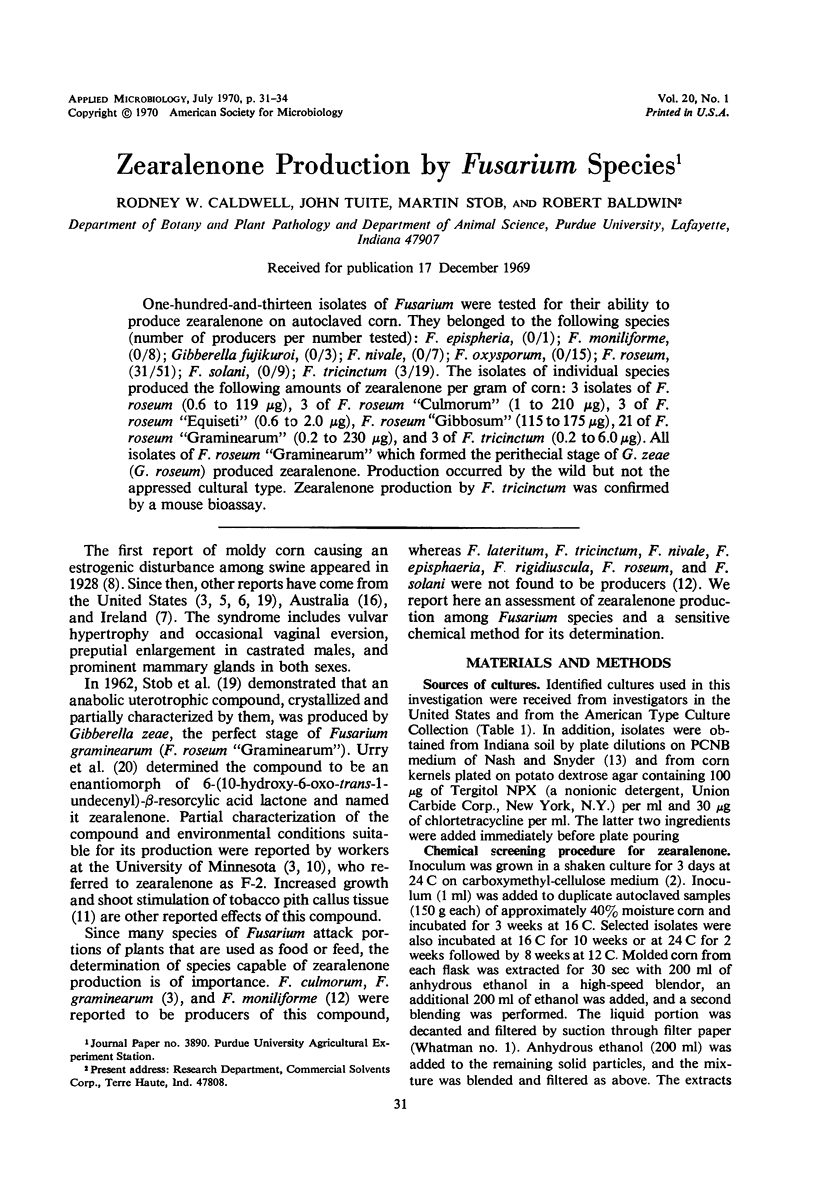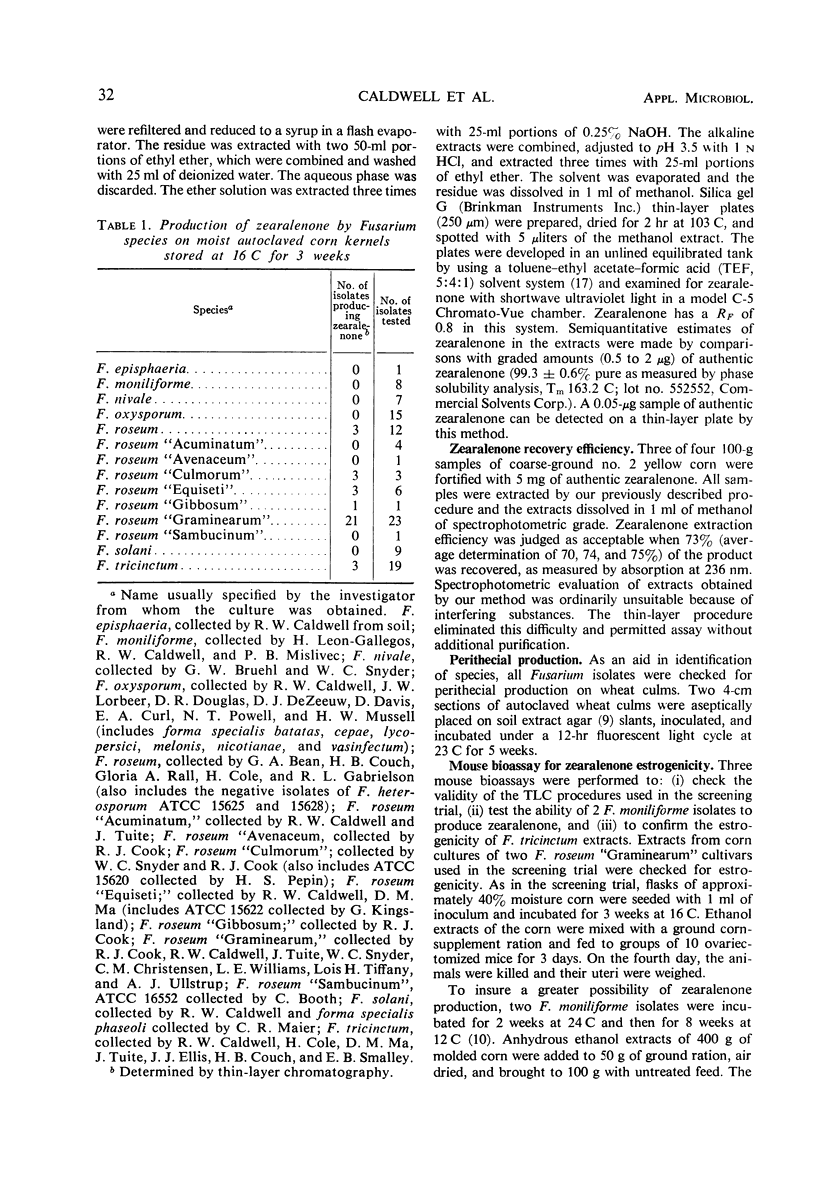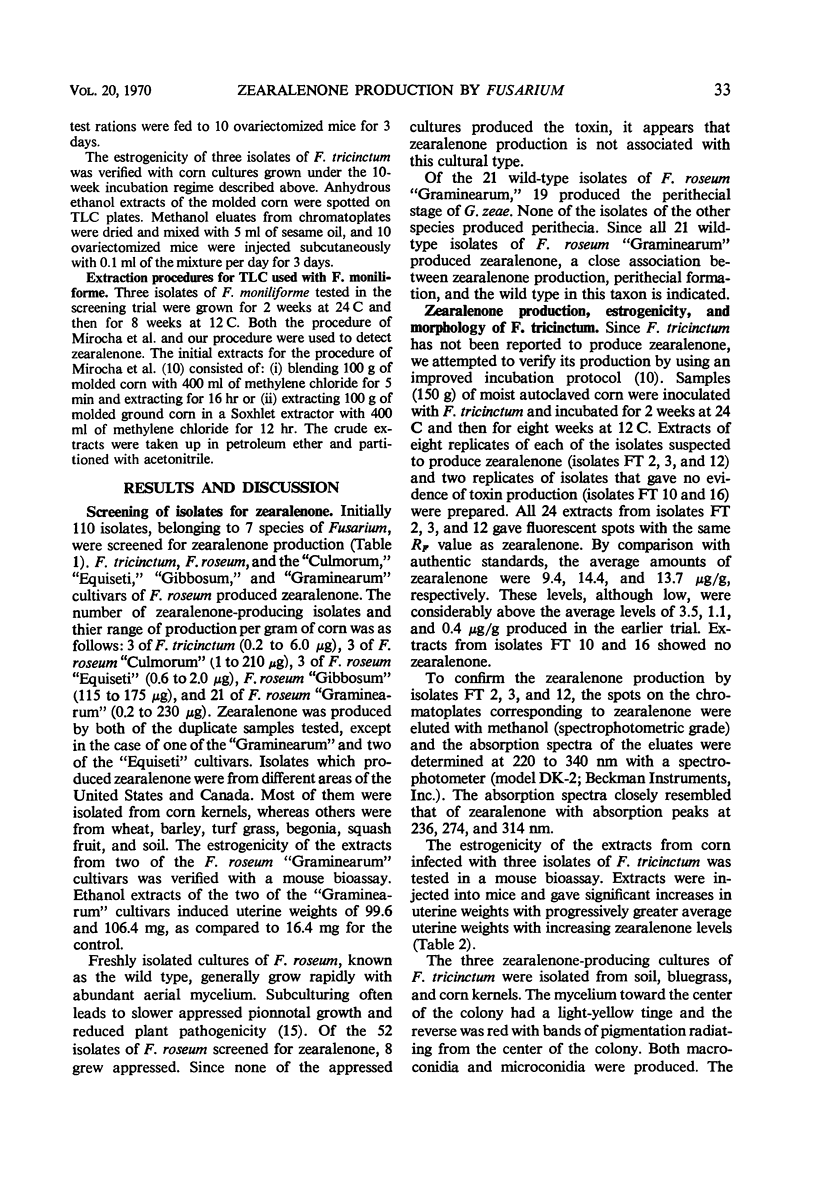Abstract
One-hundred-and-thirteen isolates of Fusarium were tested for their ability to produce zearalenone on autoclaved corn. They belonged to the following species (number of producers per number tested): F. epispheria, (0/1); F. moniliforme, (0/8); Gibberella fujikuroi, (0/3); F. nivale, (0/7); F. oxysporum, (0/15); F. roseum, (31/51); F. solani, (0/9); F. tricinctum (3/19). The isolates of individual species produced the following amounts of zearalenone per gram of corn: 3 isolates of F. roseum (0.6 to 119 μg), 3 of F. roseum “Culmorum” (1 to 210 μg), 3 of F. roseum “Equiseti” (0.6 to 2.0 μg), F. roseum “Gibbosum” (115 to 175 μg), 21 of F. roseum “Graminearum” (0.2 to 230 μg), and 3 of F. tricinctum (0.2 to 6.0 μg). All isolates of F. roseum “Graminearum” which formed the perithecial stage of G. zeae (G. roseum) produced zearalenone. Production occurred by the wild but not the appressed cultural type. Zearalenone production by F. tricinctum was confirmed by a mouse bioassay.
Full text
PDF



Selected References
These references are in PubMed. This may not be the complete list of references from this article.
- Christensen C. M., Nelson G. H., Mirocha C. J. Effect on the white rat uterus of a toxic substance isolated from Fusarium. Appl Microbiol. 1965 Sep;13(5):653–659. doi: 10.1128/am.13.5.653-659.1965. [DOI] [PMC free article] [PubMed] [Google Scholar]
- Mirocha C. J., Christensen C. M., Nelson G. H. Biosynthesis of the fungal estrogen F-2 and a naturally occurring derivative (F-3) by Fusarium moniliforme. Appl Microbiol. 1969 Mar;17(3):482–483. doi: 10.1128/am.17.3.482-483.1969. [DOI] [PMC free article] [PubMed] [Google Scholar]
- Mirocha C. J., Christensen C. M., Nelson G. H. Estrogenic metabolite produced by Fusarium graminearum in stored corn. Appl Microbiol. 1967 May;15(3):497–503. doi: 10.1128/am.15.3.497-503.1967. [DOI] [PMC free article] [PubMed] [Google Scholar]
- STOB M., BALDWIN R. S., TUITE J., ANDREWS F. N., GILLETTE K. G. Isolation of an anabolic, uterotrophic compound from corn infected with Gibberella zeae. Nature. 1962 Dec 29;196:1318–1318. doi: 10.1038/1961318a0. [DOI] [PubMed] [Google Scholar]
- Scott P. M., van Walbeek W., Forgacs J. Formation of aflatoxins by Aspergillus ostianus Wehmer. Appl Microbiol. 1967 Jul;15(4):945–945. doi: 10.1128/am.15.4.945-.1967. [DOI] [PMC free article] [PubMed] [Google Scholar]


